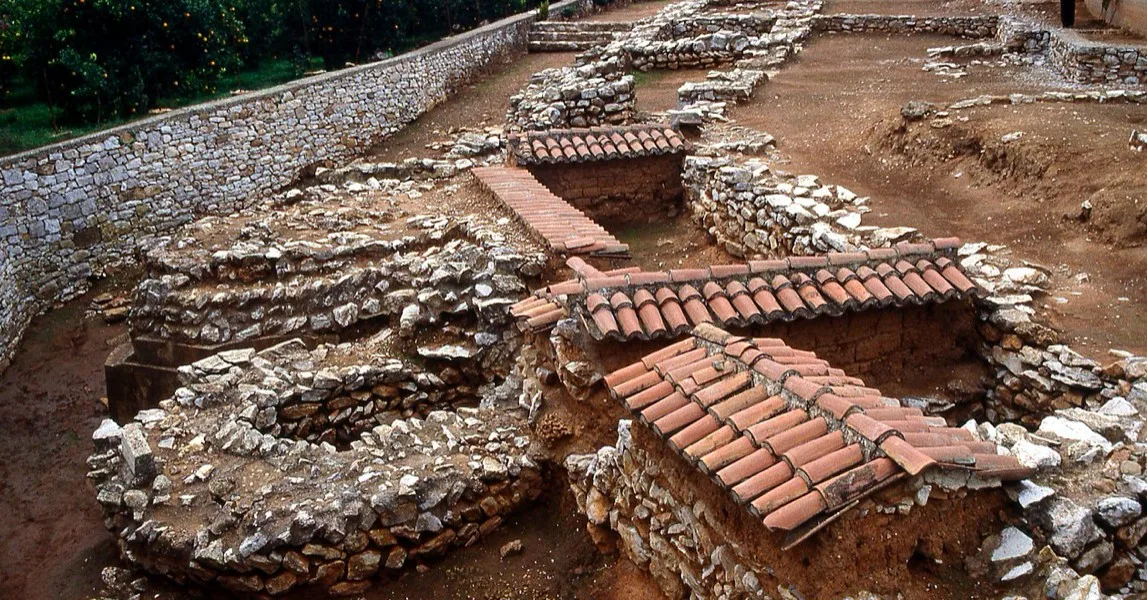Discovered within the historical site of Lerna in Greece's Argolid region, the ‘House of Tiles’ stands as a significant relic of ancient history. Recognised as Greece's oldest standing house, it offers a unique glimpse into the Early Bronze Age, dating back to roughly 2800-2200 BCE.
Located within the Lernaean Hydra archaeological site, this house shares its surroundings with legendary tales. According to Greek mythology, it was the lair of the fearsome Lernaean Hydra, famously vanquished by Heracles. Yet, its history extends far beyond these myths.
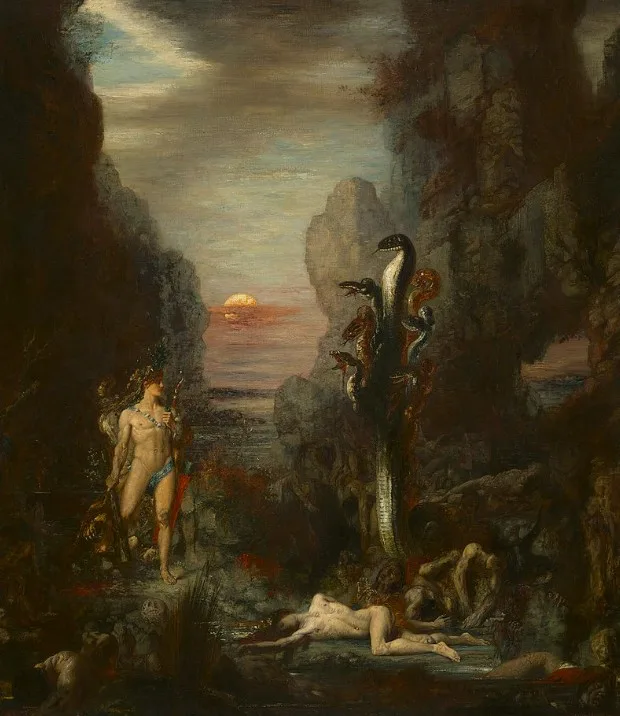
Lerna’s Ancient History
Lerna has a rich history. People first settled there during the Neolithic period, around 5000 years ago. But after some time, they left the area. Then, during the Early Bronze Age, roughly 4500 years ago, a new settlement was built on top of the old one. This new settlement was named Lerna III.
Lerna III was well-protected with strong walls and towers. One of its remarkable buildings was the 'House of Tiles', named after its unique clay tile roof, one of the earliest examples of such roofing. Sadly, this grand house was destroyed by a fire at the end of the Early Bronze Age.
After this destruction, the site was covered with a layer of earth, and no one built on it for a long time. During the Middle Bronze Age, around 3500 years ago, the people in the area began burying their dead in the mound, but they didn't construct new buildings.
During the Late Bronze Age, known as the Mycenaean period, Lerna was primarily used as a cemetery. However, around 1250 BCE, it was completely abandoned.
In terms of pottery, during Lerna III, people made special spouted vessels called "sauceboats," along with bowls and saucers. These pots had simple decorations. The destruction of the House of Tiles marked the end of this period.
Lerna IV brought a fresh start. It was no longer a large, fortified centre but a small town with houses made of brick and stone. These houses often had central hearths, and the streets were narrow. Many pits, called bothroi, were dug during this time and eventually filled with waste materials, bones, and broken pots. Pottery styles changed significantly during this phase, with new forms and patterns emerging.
Lerna V continued this phase with different pottery styles, including matte-painted ware and imported pottery from places like the Cyclades and Crete. People also started burying the dead within or between houses, a common practice during this period.
The ‘House of Tiles’
The ‘House of Tiles’ was an Early Helladic II palace uncovered during meticulous excavations led by American archaeologist William A. McDonald in the 1950s and 1960s. As previously noted, it earned its name from the distinctive clay roofing tiles discovered during excavations. These tiles, considered among the earliest examples of fired clay roof tiles in Greece, highlight the advanced construction techniques of the time.
McDonald's meticulous excavations unearthed not just the house but a complex of structures, with the ‘House of Tiles’ at its centre. This architectural marvel stands as evidence of its ancient builders' ingenuity, featuring mudbrick walls reinforced by a wooden frame. Its interior, an intricate web of interconnected rooms, includes a central hearth and storage areas. These rooms provide a rare glimpse into the daily lives, activities, and culinary practices of the house's ancient inhabitants.
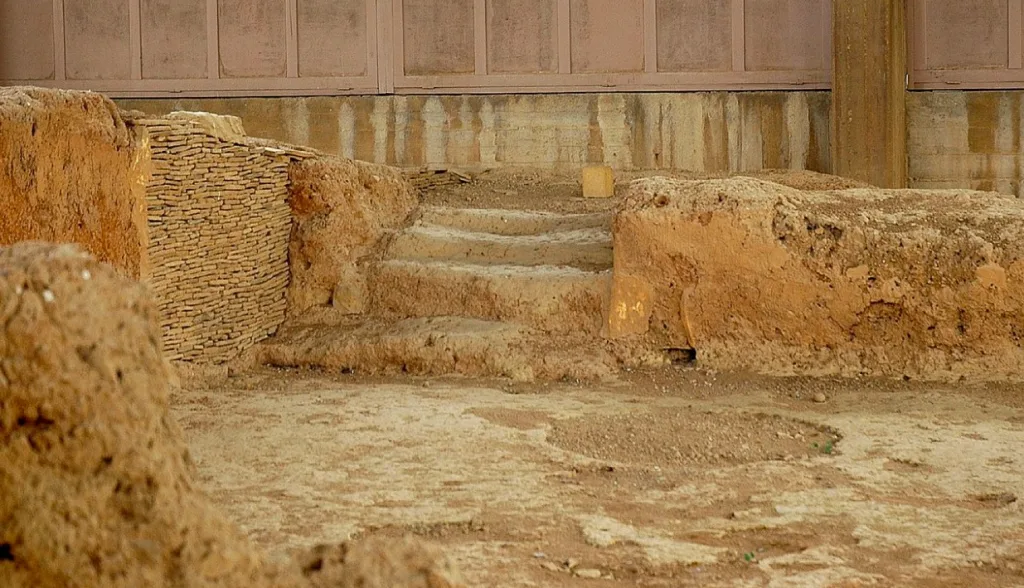
Bronze Age Insights
Life during the Early Bronze Age was characterised by agriculture, pottery-making, and the use of metal tools. Within this house, inhabitants likely engaged in farming, animal husbandry, and possibly trade with neighbouring settlements. The central hearth served as the heart of the household, offering warmth and a place for cooking.
Deciphering the Past: Who Lived Here?
While the identities of the house's occupants remain shrouded in mystery, clues hint at their possible status as part of the emerging social elite during the Early Bronze Age. The grandeur of the house, both in size and construction materials, suggests a life of prosperity. It is plausible that this ancient abode served as the residence of a local chieftain or another influential figure within the community.
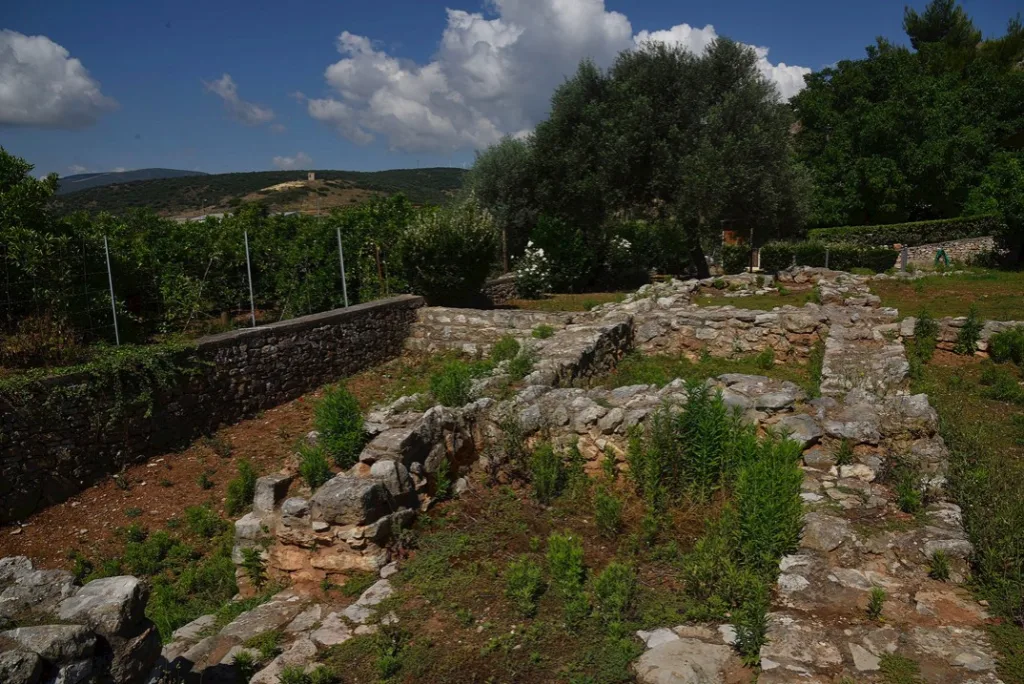
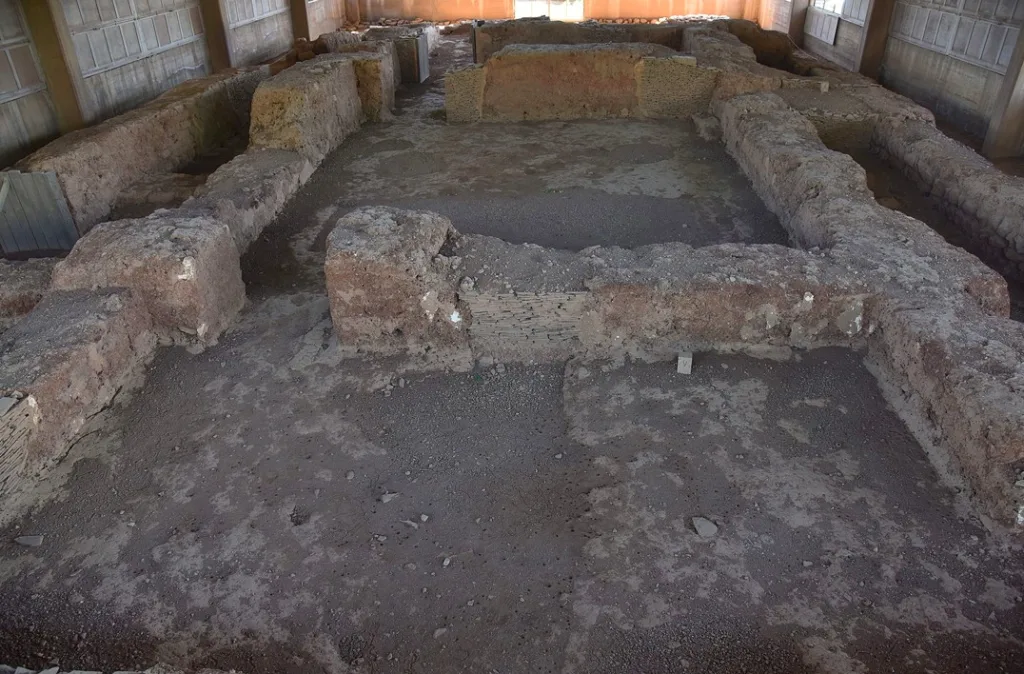
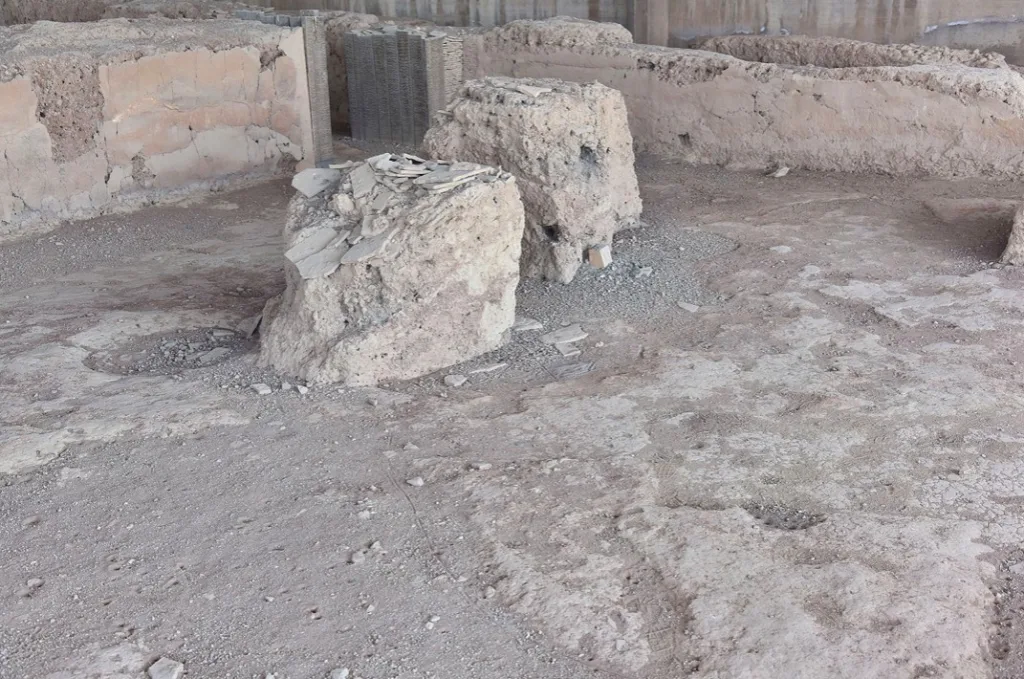
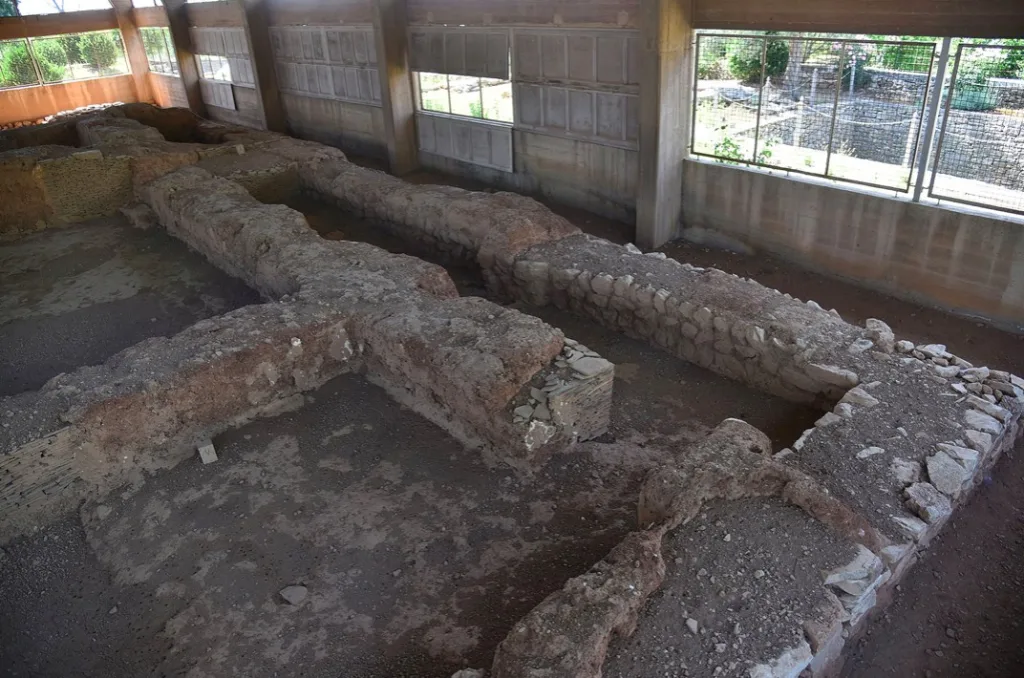
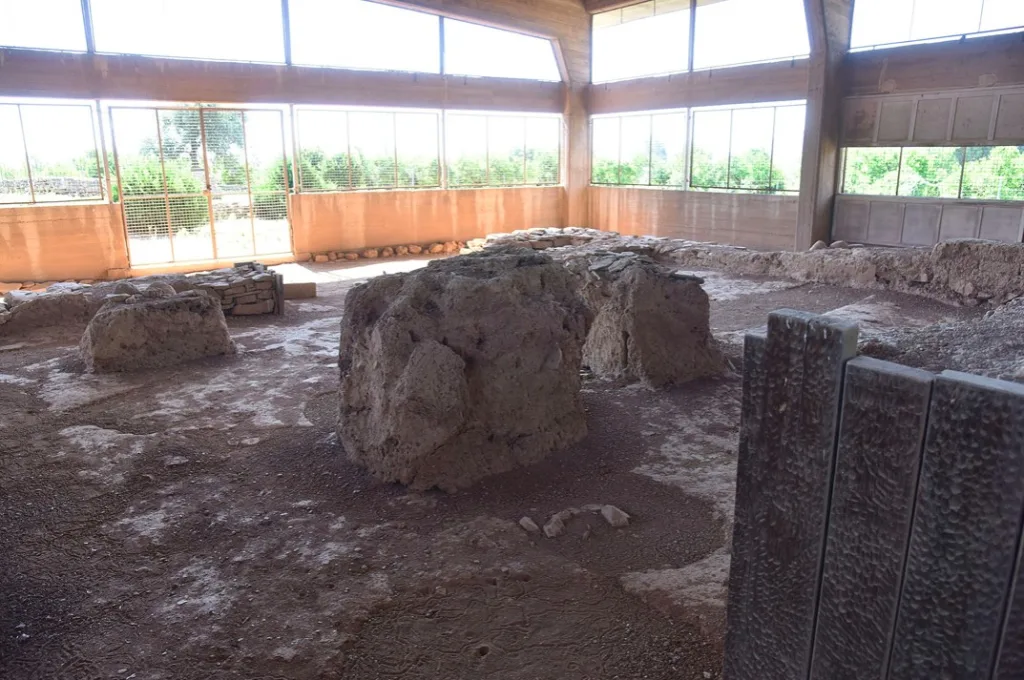

Visiting Today
Today, the 'House of Tiles' welcomes curious travellers and history enthusiasts. Guided tours, often led by experts, provide a comprehensive exploration of its historical significance, architectural layout, and Bronze Age relevance. Visitors can explore the well-preserved structure, including the central hearth, storage areas, and remnants of the clay roofing tiles.
While the site may not house a dedicated museum, nearby archaeological museums exhibit artefacts unearthed during excavations. Visitors also have the opportunity to soak in the serene ambiance of Lerna's picturesque surroundings, making their journey to the 'House of Tiles' an educational and enriching experience that deepens their understanding of ancient Greek civilisation.
To visit the 'House of Tiles', head to Lerna, a brief 4-kilometre drive southwest from the modern town of Argos. Lerna's historical and archaeological significance make it an appealing destination for those eager to uncover Greece's ancient past.
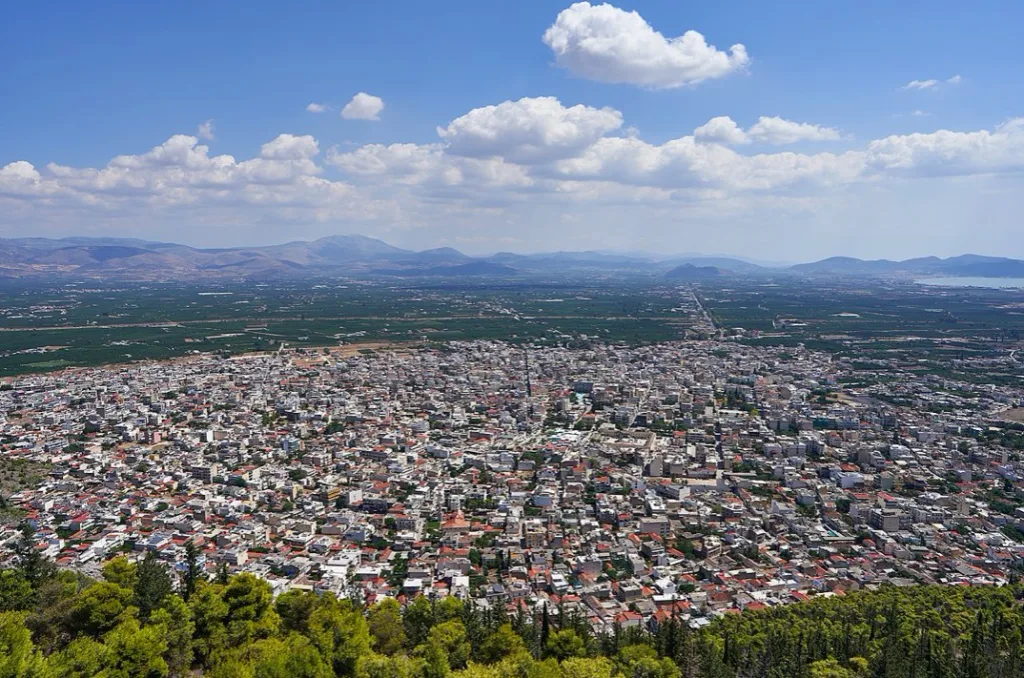
Read also NFTs: Is This The End?

